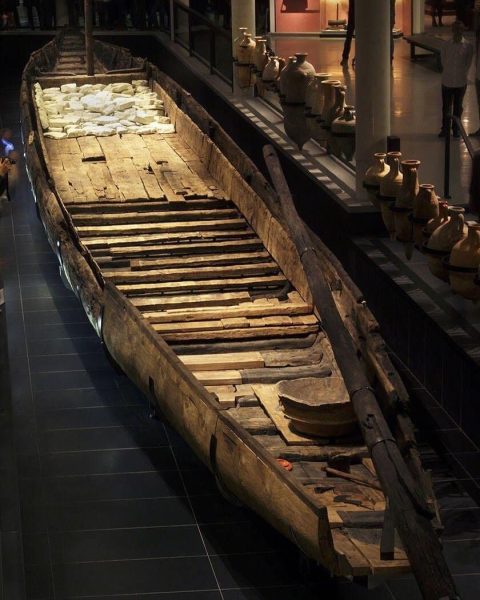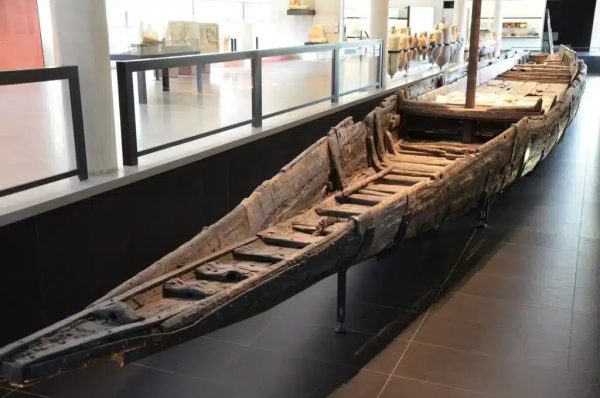
In the realms of archaeological discovery, two extraordinary finds have captivated the world with their historical significance—the Arles Rhône 3, a remarkably well-preserved Roman boat discovered in the Rhône River, and the Apoxyomenos, an ancient bronze statue recovered from the depths of the Adriatic Sea. Join us as we explore the mysteries surrounding these artifacts, shedding light on their origins, historical context, and the intriguing tales they tell.
Arles Rhône 3: A Roman Boat Resurrected:
The Arles Rhône 3, a Roman boat dating back to 66-70 CE, emerged from the depths of the Rhône River in Arles, France, in 2004. Measuring an impressive 31.09 meters in length, this well-preserved vessel provides a fascinating glimpse into the maritime prowess of ancient Rome. Today, it stands as a centerpiece at the Musée départemental Arles antique, offering visitors a tangible connection to the seafaring traditions of the past.
The discovery of Arles Rhône 3 is a testament to the meticulous preservation efforts of archaeologists, showcasing the technological and engineering achievements of the Roman civilization. Its presence at the museum allows enthusiasts and scholars alike to marvel at the craftsmanship and maritime advancements of a bygone era.

Apoxyomenos: A Bronze Athlete Resurrected from the Adriatic Depths:
In 1996, Belgian diver René Wauters stumbled upon an archaeological treasure while exploring the deep waters near Vele Orjule, a Croatian islet in the Adriatic Sea. What he discovered was the Apoxyomenos, a mysterious ancient bronze statue that would become the subject of intense scrutiny and fascination within the archaeological community.
Depicting a naked and muscular male athlete scraping sweat and dust from his body, the Apoxyomenos exudes a sense of athletic prowess frozen in time. The statue’s recovery in 1999 marked the beginning of a lengthy desalination and restoration process that concluded in 2005. Despite its corroded state, the statue’s motif sparked a question: was it Roman or Greek?
The Quest for Origins: Unraveling Apoxyomenos’s Mystery:
Determining the origins of the Apoxyomenos proved challenging until 2009, when nuclear techniques, including the use of an accelerator, provided crucial insights. The methods of construction, age, and origin of the statue were carefully scrutinized, leading researchers to a clearer understanding of its cultural roots.

The Apoxyomenos, with its intricate detailing and symbolic representation of athleticism, highlights the blurred lines between Roman and Greek artistry. Its discovery offers a glimpse into the ancient world’s fascination with the human form and the meticulous craftsmanship that defined the classical period.
Conclusion:
In conclusion, the Arles Rhône 3 and the Apoxyomenos stand as captivating reminders of our shared human history. The Roman boat’s preservation showcases the seafaring achievements of ancient civilizations, while the Apoxyomenos provides a unique window into the artistic expressions of the classical era. These archaeological treasures, now on display for the world to see, continue to inspire awe and curiosity, inviting us to unravel the mysteries of our past and appreciate the enduring legacies of ancient craftsmanship.





